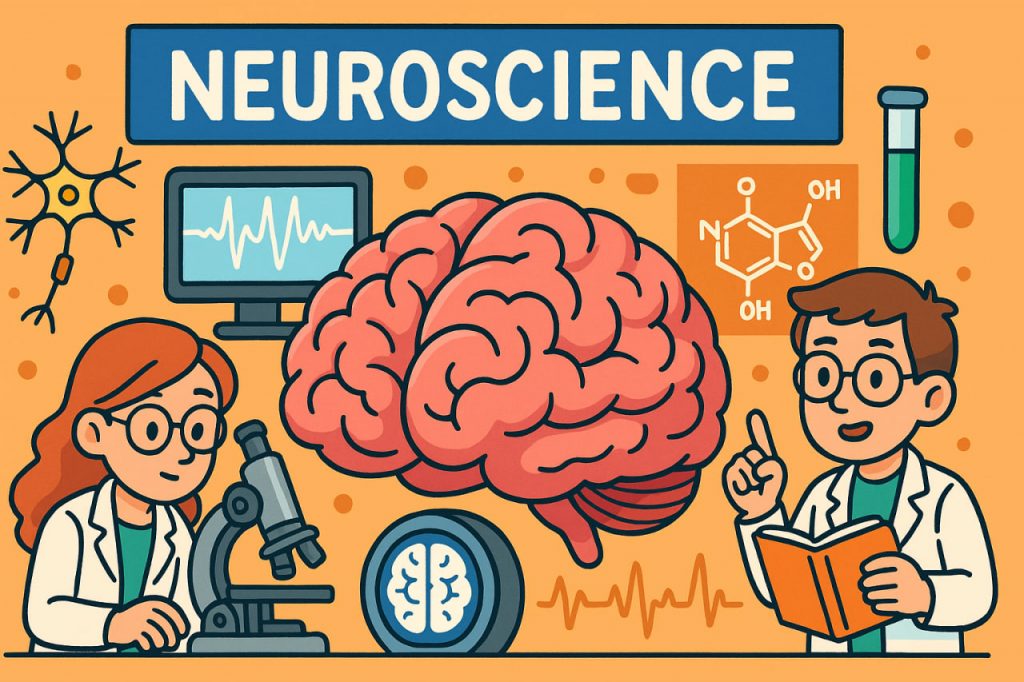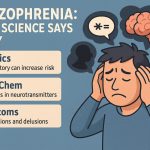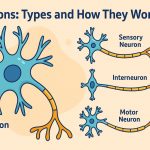Neuroscience is the scientific study of the nervous system, including the brain, spinal cord, and networks of neurons that transmit information throughout the body. It is a multidisciplinary field that combines biology, psychology, chemistry, physics, and computer science to understand how the brain works. Neuroscience explores how we think, learn, move, and experience emotions. By studying the nervous system, scientists also uncover the causes of neurological and psychiatric disorders, creating pathways for better treatments and technologies.
The Structure of the Nervous System
The nervous system is divided into two main parts: the central nervous system (CNS), which includes the brain and spinal cord, and the peripheral nervous system (PNS), which connects the CNS to the rest of the body. The brain itself is composed of specialized regions responsible for memory, vision, movement, and emotions. Neurons communicate through electrical impulses and chemical signals called neurotransmitters. Understanding this structure is crucial for explaining how thought and behavior emerge from biological processes.
Methods of Neuroscience Research
Neuroscience uses advanced tools to study the brain. Neuroimaging techniques, such as MRI and PET scans, allow scientists to observe brain activity in real time. Electrophysiology records electrical signals from neurons, while molecular biology reveals the genetic basis of brain function. Computational neuroscience uses mathematical models and artificial intelligence to simulate brain activity. These approaches provide a detailed view of how the nervous system operates at multiple levels, from molecules to complex behaviors.
Applications of Neuroscience
Discoveries in neuroscience have wide applications in medicine and technology. Understanding brain function has led to treatments for Alzheimer’s disease, Parkinson’s disease, and epilepsy. Neuroscience also informs mental health care, helping manage conditions like depression, anxiety, and schizophrenia. Beyond health, neuroscience inspires the development of artificial intelligence, brain-computer interfaces, and educational methods. These applications show how deeply the study of the brain impacts human society.
Challenges in Neuroscience
Despite progress, neuroscience still faces many challenges. The brain is the most complex organ, with billions of interconnected neurons, making it difficult to fully map and understand. Ethical questions arise when dealing with brain modification, memory alteration, or advanced AI inspired by brain function. Another challenge is bridging the gap between basic science and clinical practice to ensure discoveries benefit patients. Ongoing research continues to address these issues with caution and responsibility.
The Future of Neuroscience
The future of neuroscience looks promising. Projects like the Human Brain Project and the BRAIN Initiative aim to create detailed maps of brain activity. Advances in neurotechnology may help restore lost functions for people with paralysis through brain-controlled prosthetics. Personalized medicine, based on genetic and brain imaging data, could revolutionize treatment for neurological disorders. As neuroscience evolves, it will not only deepen our understanding of the brain but also raise important philosophical questions about consciousness and identity.
Conclusion
Neuroscience is the key to unlocking the mysteries of the brain and nervous system. By combining diverse scientific fields, it explains how we think, feel, and act, while also developing treatments for complex disorders. The challenges are great, but so are the opportunities for improving human health and technology. With every discovery, neuroscience brings us closer to understanding the essence of what it means to be human.
Glossary
- Neuroscience – the scientific study of the nervous system.
- Nervous system – the network of brain, spinal cord, and peripheral nerves.
- Neurons – nerve cells that transmit signals through electrical and chemical processes.
- Neurotransmitters – chemical messengers that carry signals between neurons.
- Central nervous system (CNS) – the brain and spinal cord.
- Peripheral nervous system (PNS) – nerves connecting the CNS to the body.
- Neuroimaging – techniques for visualizing brain structure and activity.


